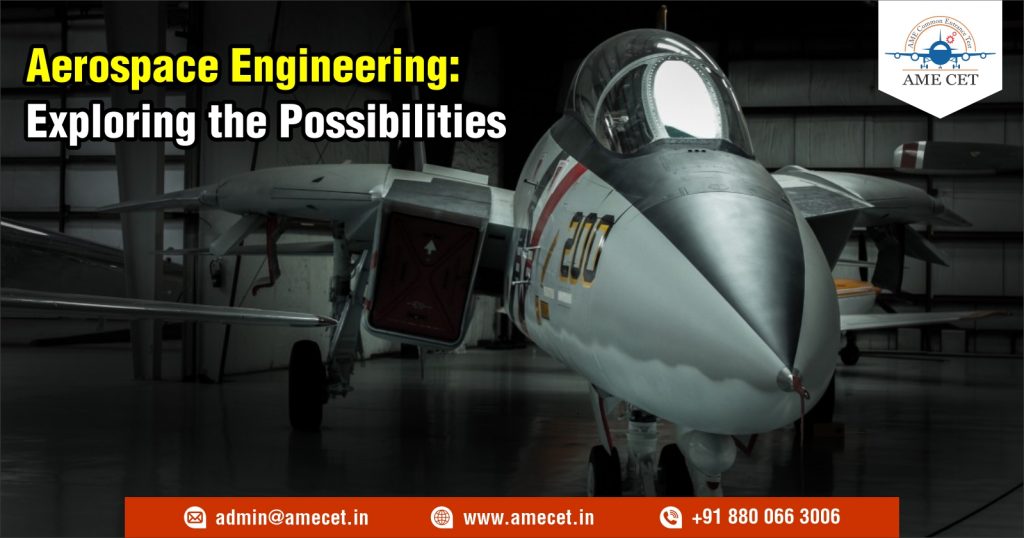Aerospace Engineering: Exploring the Possibilities
Posted on : 18 March, 2023 3:57 pm
Introduction
Aerospace engineering is an exciting field that offers endless possibilities for innovation and exploration. As an aerospace engineer, you have the opportunity to work on cutting-edge technology, design and build aircraft, spacecraft, and other vehicles, and contribute to the advancement of human knowledge and exploration. In this blog post, we’ll explore the lifestyle of an aerospace engineer, salary both global and abroad, future innovation scope, recent technology innovation, space exploration, offered program, demand in the future, top recruiters, and the profile of an aerospace engineer.
Lifestyle of an Aerospace Engineer
Aerospace engineers work in a dynamic and challenging environment that requires creativity, critical thinking, and attention to detail. They often work in teams, collaborating with other engineers, scientists, and technicians to design, build, and test aircraft and spacecraft. Aerospace engineers may work in a variety of settings, including research labs, manufacturing facilities, and airports. They may also travel frequently, especially if they work for an international aerospace company.
Salary of Aerospace Engineers
The salary of an aerospace engineer varies depending on several factors, such as experience, education, location, and job type. According to the U.S. Bureau of Labor Statistics (BLS), the median annual salary for aerospace engineers was $118,610 as of May 2020. However, the salary can be much higher for experienced aerospace engineers, especially those working for large aerospace companies. The salary also varies by location, with aerospace engineers working in California, Texas, and Washington state earning some of the highest salaries.
Future Innovation Scope
The field of aerospace engineering is constantly evolving, with new technologies and innovations emerging every year. One of the most promising areas of innovation is the development of electric and hybrid aircraft, which have the potential to reduce carbon emissions and improve the efficiency of air travel. Another area of innovation is space exploration, with many private companies and government agencies investing in new spacecraft designs and propulsion systems.
Recent Technology Innovation
One of the most exciting recent technology innovations in aerospace engineering is the development of reusable rockets. Companies like SpaceX and Blue Origin have successfully launched and landed rockets multiple times, which could significantly reduce the cost of space exploration and make it more accessible to private companies and individuals. Another recent innovation is the use of 3D printing to manufacture aircraft and spacecraft components, which can reduce production time and costs while improving the quality of the final product.
Space Exploration
Space exploration is a major area of focus for many aerospace engineers, with numerous private companies and government agencies investing in new spacecraft designs and propulsion systems. NASA’s Artemis program, for example, aims to send humans back to the moon by 2024 and establish a sustainable presence there. Private companies like SpaceX and Blue Origin are also working on developing new spacecraft and propulsion systems that could take humans to Mars and beyond.
Offered Programs
Aerospace engineering is typically offered as a bachelor’s or master’s degree program at many universities around the world. The curriculum typically includes courses in mathematics, physics, materials science, aerodynamics, and propulsion systems, as well as hands-on experience in designing and building aircraft and spacecraft. Some universities also offer specialized programs in aircraft engineering, space engineering, or avionics engineering.
Demand in the Future
The demand for aerospace engineers is expected to grow in the coming years, as the aviation and space industries continue to expand. According to the BLS, employment of aerospace engineers is projected to grow by 3% from 2020 to 2030, which is about as fast as the average for all occupations. However, the demand may vary by region and job type, with some areas experiencing higher demand than others.
Top Recruiters
Some of the top aerospace engineering companies in the world include ISRO, DRDO, Boeing, Airbus, Lockheed Martin, Northrop Grumman, and SpaceX. These companies are known for their cutting-edge technology, innovative designs, and global reach. They offer a range of job opportunities for aerospace engineers, from research and development to manufacturing and testing. Other potential employers for aerospace engineers include government agencies like NASA, as well as smaller private companies and startups.
Profile of an Aerospace Engineer
To become an aerospace engineer, you will typically need a bachelor’s or master’s degree in aerospace engineering or a related field. In addition to a strong academic background in math and science, you will also need excellent problem-solving skills, attention to detail, and the ability to work well in a team. Aerospace engineers should also have strong communication and project management skills, as they will often be working with other engineers and technicians to design and build complex systems.
Conclusion
Aerospace engineering is a fascinating and rewarding field that offers endless possibilities for innovation and exploration. As an aerospace engineer, you can work on cutting-edge technology, design and build aircraft and spacecraft, and contribute to the advancement of human knowledge and exploration. With the demand for aerospace engineers expected to grow in the coming years, now is an excellent time to explore the possibilities of a career in aerospace engineering.

